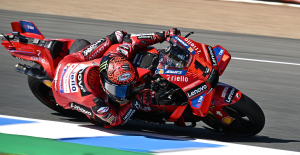It had to come across as mockery to the readers. "International train connections expanded", reported the "Neue Zeit", the newspaper of the East-CDU block party, on May 23, 1965. The article on page 7 of the line-faithful newspaper continued: "For 1965, according to the notifications of the German travel agency ( Proper name of the GDR travel administration; ed.) and the expectations of the foreign railway administration and travel agencies to expect a further increase in international travel. In this year's tourist season, more than 650,000 guests from all European countries are expected in the GDR."
Guests from European countries in the GDR – on the other hand, there was not a word about GDR citizens as visitors from other European countries. Of course not, because since August 13, 1961 at the latest, all destinations west of the Iron Curtain have been practically inaccessible to subjects of the SED state without danger to their lives. But trips to other countries in the Eastern Bloc, such as Budapest, Prague or Warsaw, were also strictly regulated by the state.
In view of these restrictions, it was surprising even then that the SED dictatorship used a lot of money and resources to develop modern, competitive trains. In the same year, 1965, series production of a total of eight class VT 18.16 express railcars began. This diesel-hydraulic train with two power cars and up to four intermediate cars was intended to demonstrate the supposed modernity of real socialism on the rails and to compete with the Trans-Europa-Express VT 11 of the (West) German Federal Railways, which had been introduced almost ten years earlier. The VT 18.16 was something like the ICE of the GDR.
The trains were mostly used in international traffic from Malmö and Copenhagen via East Berlin and Prague to Austria. The express railcars were approved for speeds of 160 km/h, but there was a speed limit of 120 km/h on the Reichsbahn routes. The use under the name "Vindobona" for the connection via Prague to Vienna became particularly well known. For GDR citizens, however, the final destination was usually before the Czech-Austrian border or, if it went to Malmö, in Rostock.
After almost a quarter of a century, only one of the eight trains built was still operational in 1990; after German reunification, it ran as a special train in the Deutsche Bahn nostalgia program until 2003. This VT 18.16 rotted away for the next 18 years. Restoration by railway enthusiasts only began in 2021. However, after disassembling it, there is hardly much more than a rusty shell left. Nevertheless, it should be restored and ready to drive again by the end of 2023. The goal: to travel the same route again two decades after its farewell trip to Prague with 200 passengers on board. Approval for operation in the Czech Republic has already been granted.
Behind the project are rail enthusiasts who have joined forces in the non-profit GmbH SVT Görlitz, which was founded in 2019. "Our goal is to rework the train and ensure that it runs economically in the long term," explains the honorary managing director Mario Lieb. It's about at least 16 years. The project will cost five million euros, of which the federal government will contribute around four million euros and the Free State of Saxony another 300,000 euros. The GmbH has to bring in around 700,000 euros of its own funds - in various ways: through donations as well as through work on the train and its parts.
The VT still looks impressive with its streamlined nose. The VT 18.16 was not only reminiscent of the form of the West German competition, but also of the legendary "Flying Hamburger", which connected the Hanseatic and Reich capitals from 1933 to 1939, with a speed of 160.
More than 30 different companies are involved in the restoration of the VT 18.16; everything comes together in Halberstadt. It's all about engines, radiators and suspension, windows and historic lights as well as newly woven curtains. Luckily a well-preserved set of drawings of the original parts has survived the test of time.
But not everything can be reconstructed in detail. The toilet system only partially remains in its historical condition, i.e. with a downpipe on the rails. However, this is no longer permitted today, which is why other modern toilets with waste water tanks are being added. The door blocking will also comply with current security standards. Air conditioning, on the other hand, is not retrofitted. Many special features of the VT 18.16 remain - rotating seats in the open-plan cars or hot and cold water in the washrooms.
When the train is fully restored, the inaugural journey will be from Berlin to Prague and back. In order for the operation to be economical, the train has to be on the road 40 to 50 times a year, nationally and internationally, says Managing Director Mario Lieb. He and his fellow campaigners are not concerned with "another museum train standing in the engine shed". One-day and multi-day trips are possible. Lieb is looking for partners who will charter the train regularly.
You can also find "World History" on Facebook. We are happy about a like.

 War in Ukraine: when kyiv attacks Russia with inflatable balloons loaded with explosives
War in Ukraine: when kyiv attacks Russia with inflatable balloons loaded with explosives United States: divided on the question of presidential immunity, the Supreme Court offers respite to Trump
United States: divided on the question of presidential immunity, the Supreme Court offers respite to Trump Maurizio Molinari: “the Scurati affair, a European injury”
Maurizio Molinari: “the Scurati affair, a European injury” Hamas-Israel war: US begins construction of pier in Gaza
Hamas-Israel war: US begins construction of pier in Gaza First three cases of “native” cholera confirmed in Mayotte
First three cases of “native” cholera confirmed in Mayotte Meningitis: compulsory vaccination for babies will be extended in 2025
Meningitis: compulsory vaccination for babies will be extended in 2025 Spain is the country in the European Union with the most overqualified workers for their jobs
Spain is the country in the European Union with the most overqualified workers for their jobs Parvovirus alert, the “fifth disease” of children which has already caused the death of five babies in 2024
Parvovirus alert, the “fifth disease” of children which has already caused the death of five babies in 2024 Inflation rebounds in March in the United States, a few days before the Fed meeting
Inflation rebounds in March in the United States, a few days before the Fed meeting Video games: Blizzard cancels Blizzcon 2024, its annual high mass
Video games: Blizzard cancels Blizzcon 2024, its annual high mass Falling wings of the Moulin Rouge: who will pay for the repairs?
Falling wings of the Moulin Rouge: who will pay for the repairs? “You don’t sell a company like that”: Roland Lescure “annoyed” by the prospect of a sale of Biogaran
“You don’t sell a company like that”: Roland Lescure “annoyed” by the prospect of a sale of Biogaran Exhibition: in Deauville, Zao Wou-Ki, beauty in all things
Exhibition: in Deauville, Zao Wou-Ki, beauty in all things Dak’art, the most important biennial of African art, postponed due to lack of funding
Dak’art, the most important biennial of African art, postponed due to lack of funding In Deadpool and Wolverine, Ryan and Hugh Jackman explore the depths of the Marvel multiverse
In Deadpool and Wolverine, Ryan and Hugh Jackman explore the depths of the Marvel multiverse Tom Cruise returns to Paris for the filming of Mission Impossible 8
Tom Cruise returns to Paris for the filming of Mission Impossible 8 Skoda Kodiaq 2024: a 'beast' plug-in hybrid SUV
Skoda Kodiaq 2024: a 'beast' plug-in hybrid SUV Tesla launches a new Model Y with 600 km of autonomy at a "more accessible price"
Tesla launches a new Model Y with 600 km of autonomy at a "more accessible price" The 10 best-selling cars in March 2024 in Spain: sales fall due to Easter
The 10 best-selling cars in March 2024 in Spain: sales fall due to Easter A private jet company buys more than 100 flying cars
A private jet company buys more than 100 flying cars This is how housing prices have changed in Spain in the last decade
This is how housing prices have changed in Spain in the last decade The home mortgage firm drops 10% in January and interest soars to 3.46%
The home mortgage firm drops 10% in January and interest soars to 3.46% The jewel of the Rocío de Nagüeles urbanization: a dream villa in Marbella
The jewel of the Rocío de Nagüeles urbanization: a dream villa in Marbella Rental prices grow by 7.3% in February: where does it go up and where does it go down?
Rental prices grow by 7.3% in February: where does it go up and where does it go down? Even on a mission for NATO, the Charles-de-Gaulle remains under French control, Lecornu responds to Mélenchon
Even on a mission for NATO, the Charles-de-Gaulle remains under French control, Lecornu responds to Mélenchon “Deadly Europe”, “economic decline”, immigration… What to remember from Emmanuel Macron’s speech at the Sorbonne
“Deadly Europe”, “economic decline”, immigration… What to remember from Emmanuel Macron’s speech at the Sorbonne Sale of Biogaran: The Republicans write to Emmanuel Macron
Sale of Biogaran: The Republicans write to Emmanuel Macron Europeans: “All those who claim that we don’t need Europe are liars”, criticizes Bayrou
Europeans: “All those who claim that we don’t need Europe are liars”, criticizes Bayrou These French cities that will boycott the World Cup in Qatar
These French cities that will boycott the World Cup in Qatar Basketball: Strasbourg appeals the victory recovered by Monaco
Basketball: Strasbourg appeals the victory recovered by Monaco Top 14: UBB with Tatafu and Moefana against Bayonne
Top 14: UBB with Tatafu and Moefana against Bayonne MotoGP: Bagnaia dominates qualifying practice in Spain and sets track record
MotoGP: Bagnaia dominates qualifying practice in Spain and sets track record Olympic Games: in Athens, Greece transmits the Olympic flame to France
Olympic Games: in Athens, Greece transmits the Olympic flame to France


















